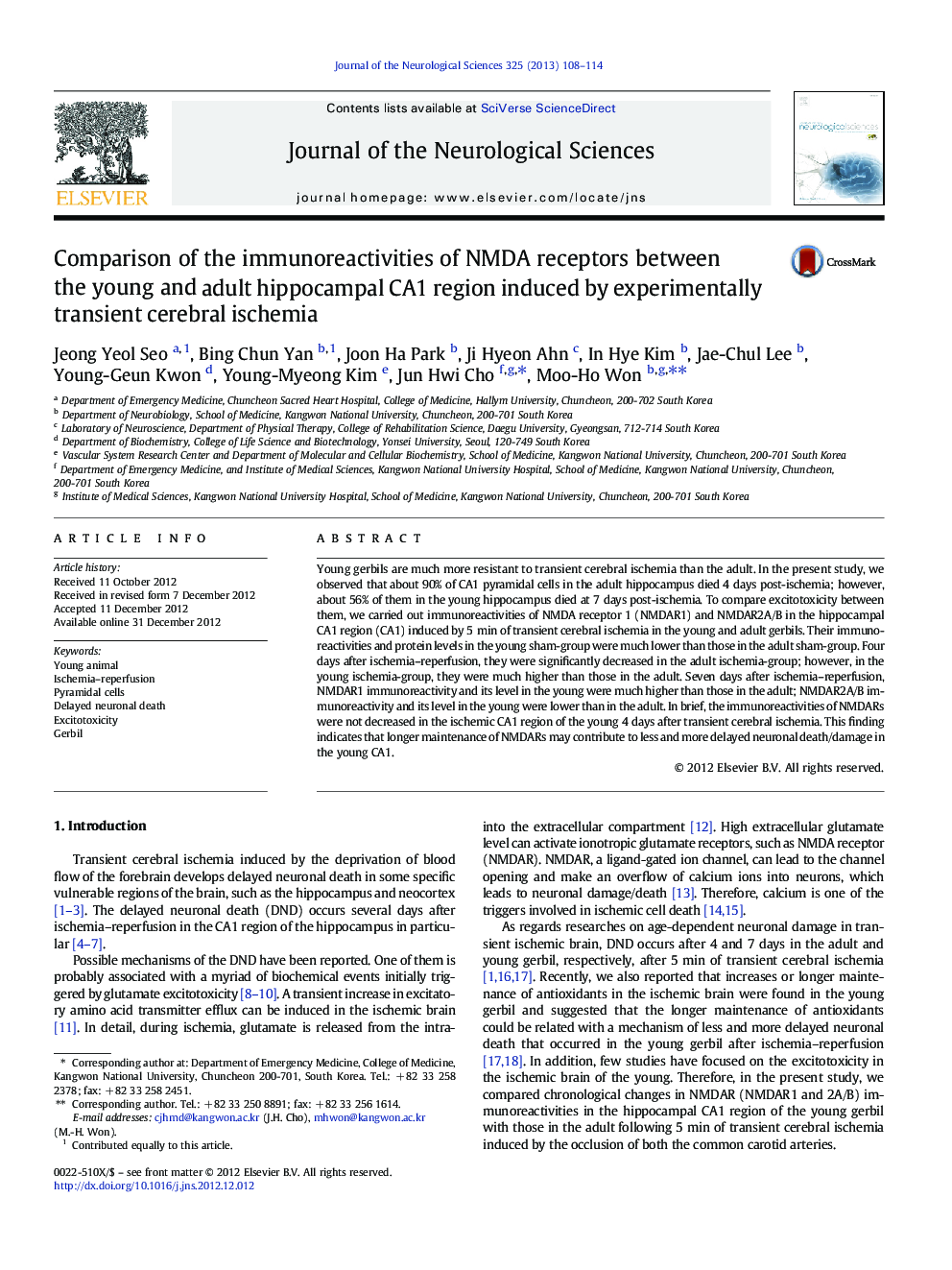| Article ID | Journal | Published Year | Pages | File Type |
|---|---|---|---|---|
| 8279710 | Journal of the Neurological Sciences | 2013 | 7 Pages |
Abstract
Young gerbils are much more resistant to transient cerebral ischemia than the adult. In the present study, we observed that about 90% of CA1 pyramidal cells in the adult hippocampus died 4Â days post-ischemia; however, about 56% of them in the young hippocampus died at 7Â days post-ischemia. To compare excitotoxicity between them, we carried out immunoreactivities of NMDA receptor 1 (NMDAR1) and NMDAR2A/B in the hippocampal CA1 region (CA1) induced by 5Â min of transient cerebral ischemia in the young and adult gerbils. Their immunoreactivities and protein levels in the young sham-group were much lower than those in the adult sham-group. Four days after ischemia-reperfusion, they were significantly decreased in the adult ischemia-group; however, in the young ischemia-group, they were much higher than those in the adult. Seven days after ischemia-reperfusion, NMDAR1 immunoreactivity and its level in the young were much higher than those in the adult; NMDAR2A/B immunoreactivity and its level in the young were lower than in the adult. In brief, the immunoreactivities of NMDARs were not decreased in the ischemic CA1 region of the young 4Â days after transient cerebral ischemia. This finding indicates that longer maintenance of NMDARs may contribute to less and more delayed neuronal death/damage in the young CA1.
Related Topics
Life Sciences
Biochemistry, Genetics and Molecular Biology
Ageing
Authors
Jeong Yeol Seo, Bing Chun Yan, Joon Ha Park, Ji Hyeon Ahn, In Hye Kim, Jae-Chul Lee, Young-Geun Kwon, Young-Myeong Kim, Jun Hwi Cho, Moo-Ho Won,
